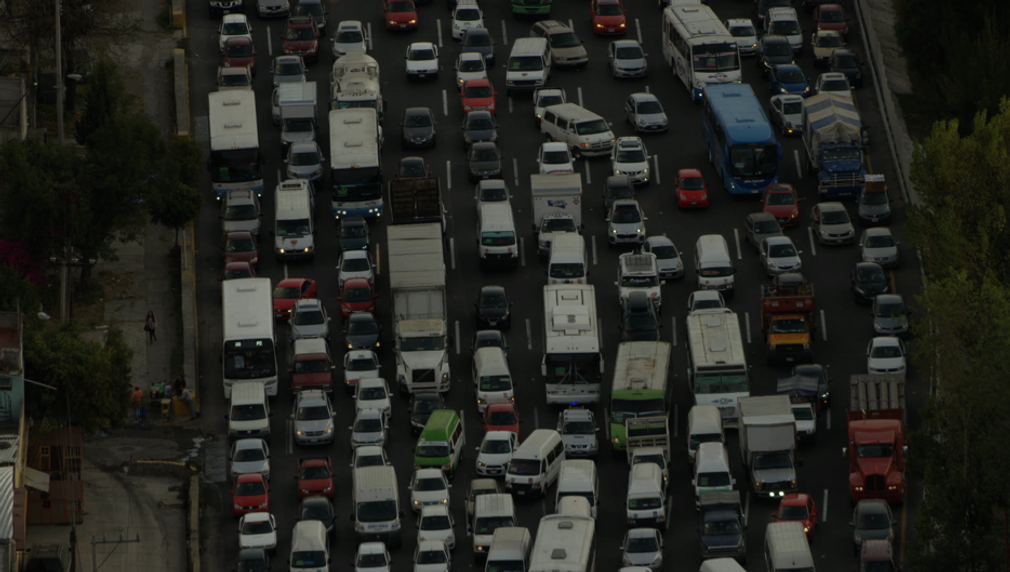You Can’t Get Ahead If You Can’t Get Around: Stories & Research on #HowWeRoll
Access to greater opportunity depends on how you get there. Our team will document and amplify stories of how people get around — and leverage the stories to improve our transportation options.

Are any other organizations collaborating on this proposal?
Investing in Place - lead applicant, Team Friday, USC Program for Regional and Environmental Equity (PERE), Impact Hub LA
Please describe your project proposal.
In Los Angeles, like many major metropolitan areas, you can’t get ahead if you can’t get around. Our transportation system — our roads, sidewalks, buses, trains, bikeways — are complex and more interconnected than people think. We will spark a series of discussions and online videos that decipher our transportation system — from how it’s funded and who makes the decisions to who depends on our buses and trains as their connection lifeline — and what we can do to make it better for all.
Which of the CONNECT metrics will your proposal impact?
Social & emotional support
Government responsiveness to residents’ needs
Travel time to work
Public transit riders
Transit-accessible housing and employment (the share of housing units and percentage of jobs that are located within a half-mile of transit)
In what areas of Los Angeles will you be directly working?
County of Los Angeles
Describe in greater detail how your proposal will make LA the best place to CONNECT?
We formed Investing in Place on January 2015 to bring together businesses, public agencies, philanthropists, researchers, and community organizations to help find solutions to improving quality of life for all, especially low-income and middle-income families in Los Angeles County.
The problem we’re trying to solve is clear: Per the National Equity Atlas, the Los Angeles metropolitan area has a higher rate of inequality than California and the U.S. The gap between the region’s wealthy and low-income communities manifests itself spatially, where you live can greatly affect opportunities for educational attainment, job access, health outcomes, public safety, environmental quality, mobility, and more. Simply put, place matters — and how you access those opportunities through different modes of transportation is paramount to one’s success.
Our proposal will accelerate our efforts and make LA the best place to connect in three ways:
1.We will de-mystify the politics of regional transportation financing through a digital video series that is dynamic, educational, and accessible to all audiences. For the past year, Investing in Place has been working to put action behind the “just growth” framework developed by Dr. Manuel Pastor (director of USC PERE) and Dr. Chris Benner. Simply put, “just growth” is the idea that by putting equity at the center of regional economic development, the region will grow stronger for everyone, for the long-haul. Indeed, there is evidence to support this not just from Pastor and Benner, but from the International Monetary Fund and Standard and Poor’s, to name a few. This means that closing the gaps between the rich and the poor through policy and other strategies benefits everyone. Our proposal will help draw the connections between transportation and broader economic opportunities.
2.We will create a story bank of how individuals travel throughout Los Angeles County and the challenges and opportunities they encounter in their own voice and experience. We are inspired by efforts from LA’s Legalize Street Vendors Campaign, DREAMers, low-wage workers organizing for dignity and recognition, and community members organizing for better neighborhoods. The core of our campaign is to empower the people who depend on more affordable, frequent, and reliable transportation options to amplify their stories to decision makers through social media, in-person meetings with elected officials, and through traditional media and the press.
3.Throughout this process, we will help cultivate new leaders and connect them to opportunities on how to improve transportation decision-making in their neighborhoods.
Deliverables:
3-4 videos from people across LA County on mobility experiences.
Multilingual education tools on equitable transportation public policy, including 2 videos on how/where key LA Region transportation decisions happen.
Screening event at Impact Hub LA.
All accompanied by communications & advocacy campaign.
Please explain how you will define and measure success for your project.
There are over 10 million people in LA County. When Metro was creating the expenditure plan for Measure M (LA County’s transportation ballot measure in November), about 48,000 people — or less than half a percent of the total population — was engaged in the process. Our goal is to increase this level of engagement by, most importantly, directly working with and mobilizing the people most affected by our transportation decisions — these include our most vulnerable populations like youth, students, older adults, and individuals with disabilities.
Our success will be measured by three metrics:
1) Number of new organic viewers, followers, and engagements on social media. Our target goal is: 1,000 new followers.
2) Number of individuals and organizations we recruit and mobilize through letter writing campaigns, public comment letters and testimonies, petition signatures, and meetings with legislators and their staff. Our target goal is: cultivating and sustaining a leadership circle of more than 25 new individuals and 5 new organizations.
3) Number of advocacy meetings with newly cultivate leaders and elected officials and their staff. Target goal: At least 10 meetings total.
How can the LA2050 community and other stakeholders help your proposal succeed?
Money
Volunteers
Publicity/awareness
Community outreach
Network/relationship support